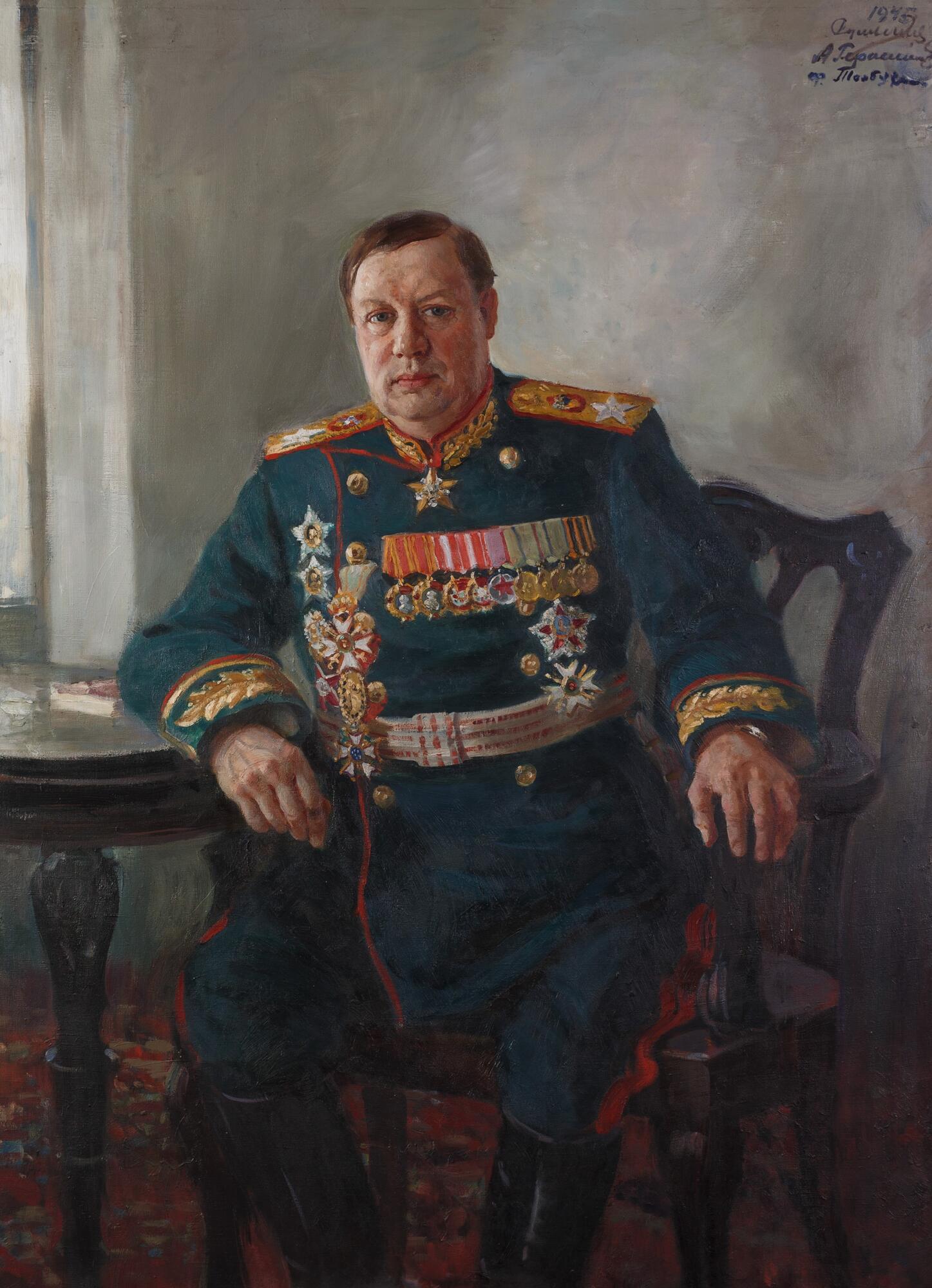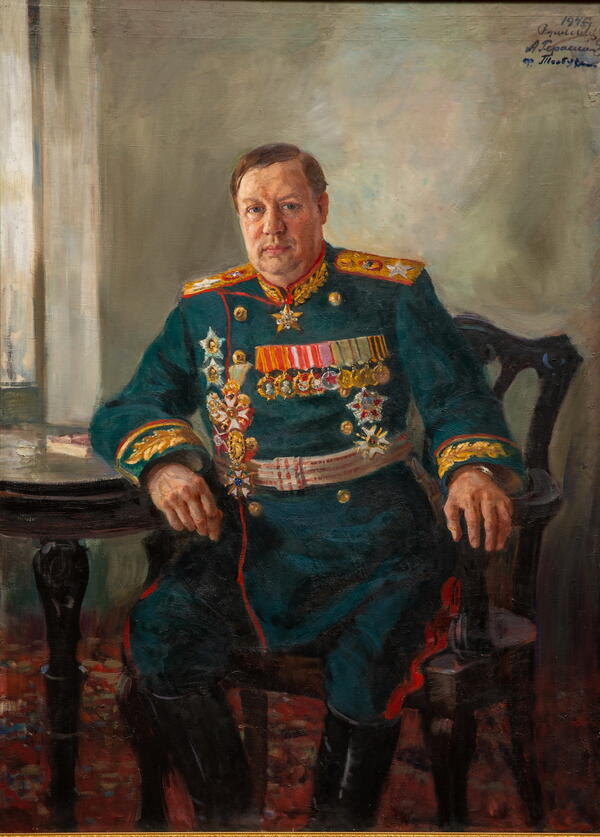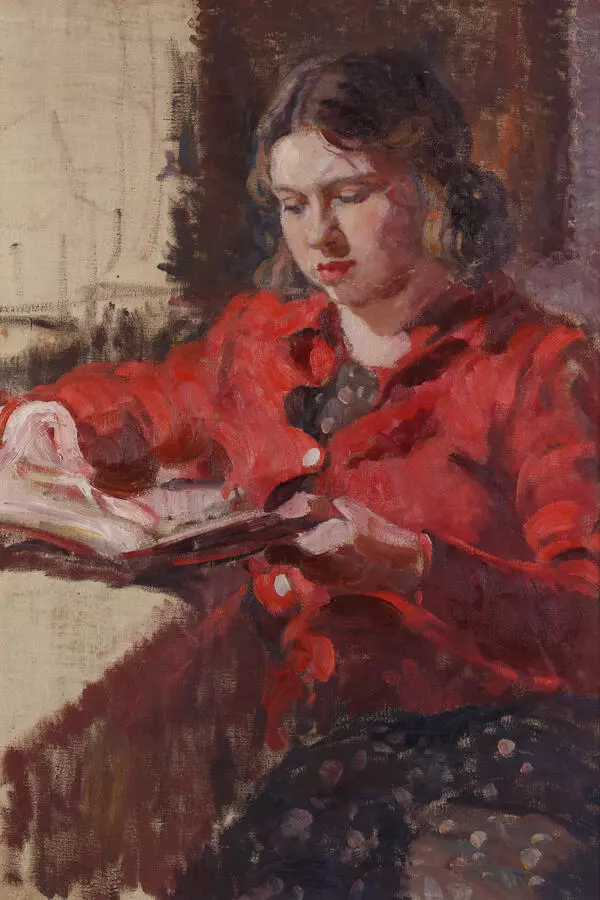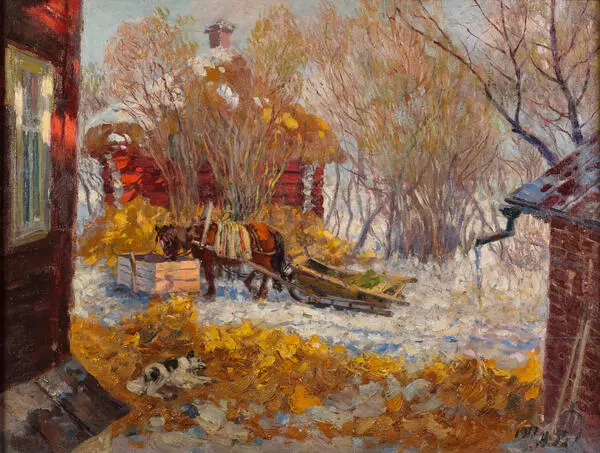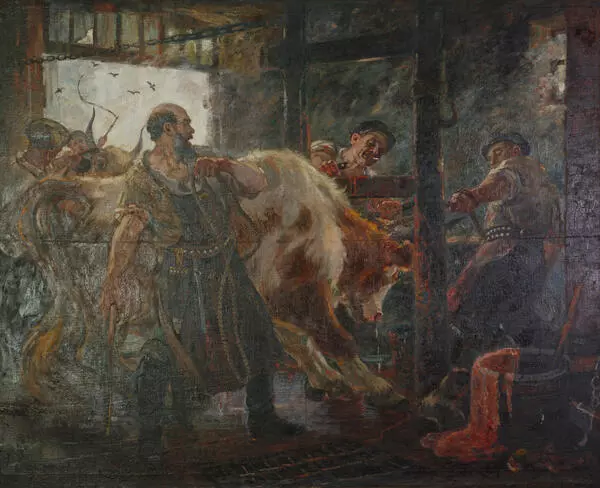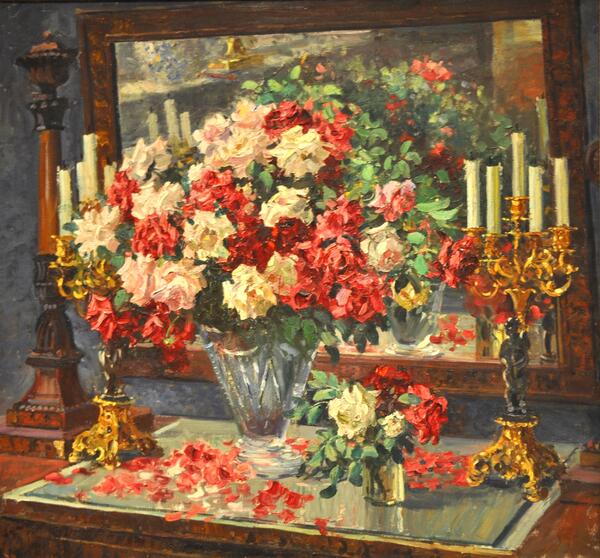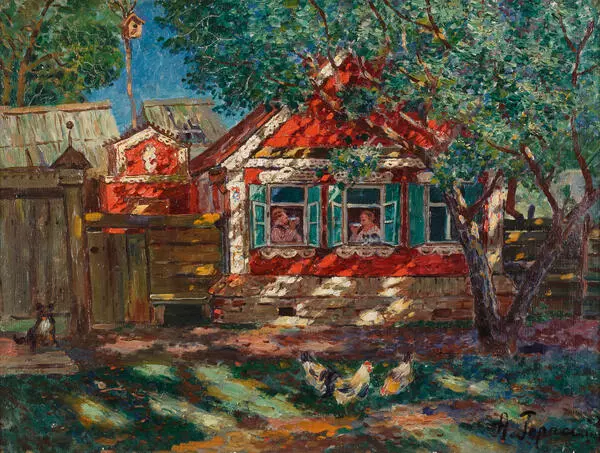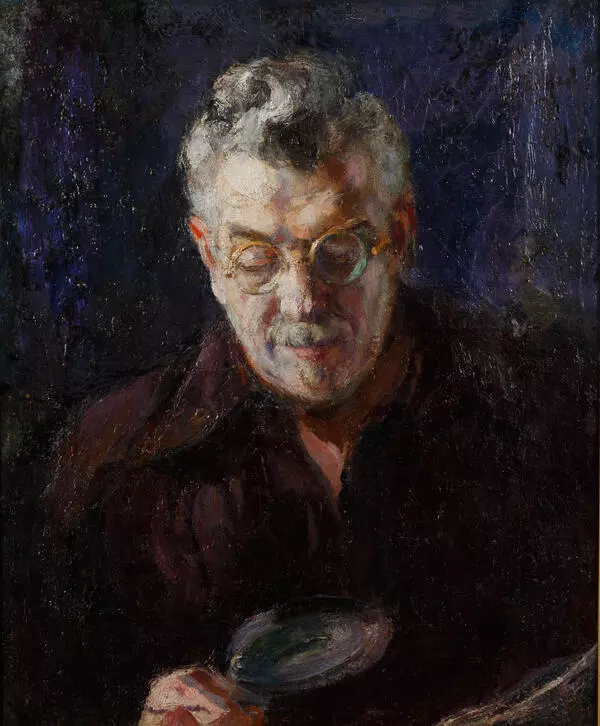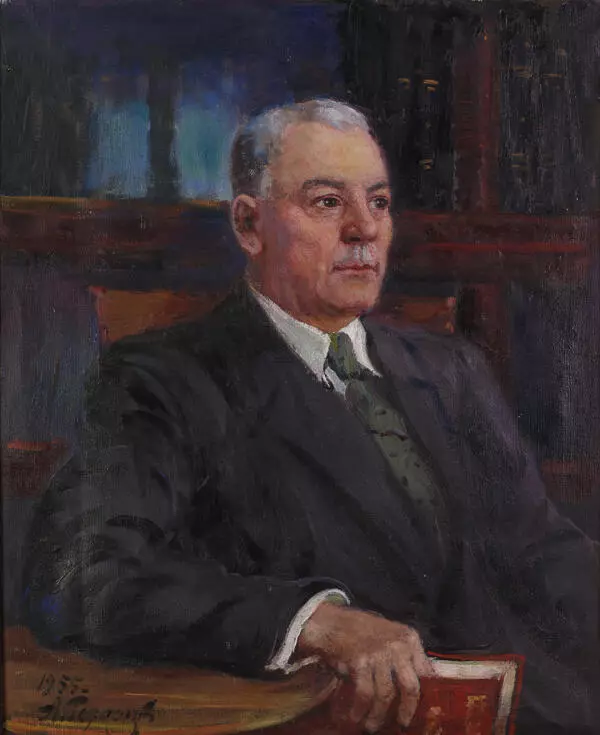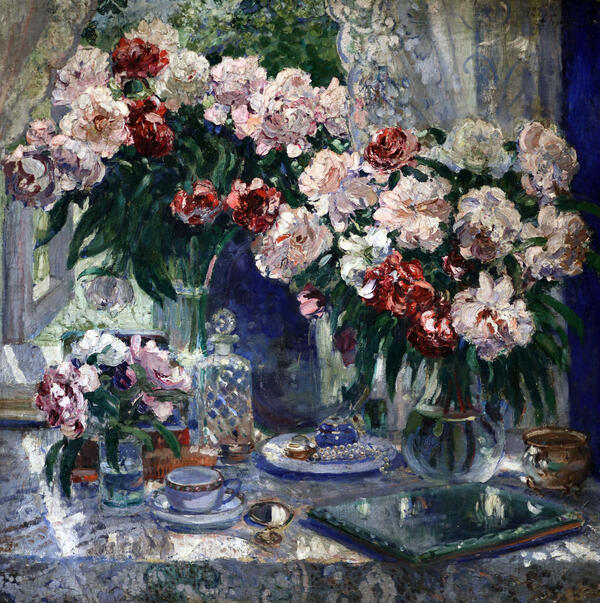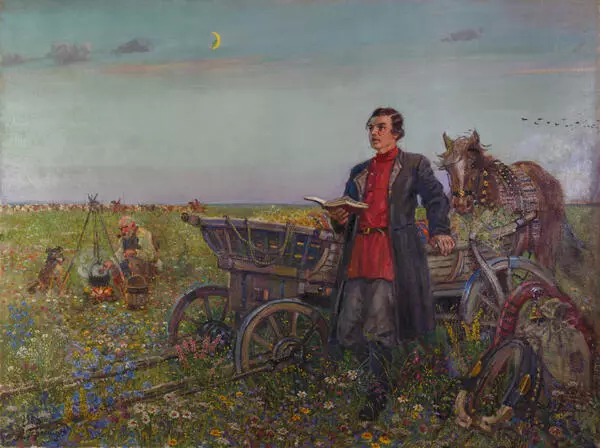At the end of the victorious 1945, Alexander Mikhailovich Gerasimov, then the People’s Artist of the USSR, was ordered to paint a portrait of the famous commander Fyodor Ivanovich Tolbukhin. The portrait was created in Romania, where Fyodor Ivanovich resided at the time. Due to his poor health, the marshal lived in a resort on the Black Sea coast, in the town of Carmen Sylva. In his autobiographical book “Life of an Artist”, the painter recalled, “A charming man, he treated my assignment very cordially. I worked in the mansion. Usually, after the session, we would sit down at the dinner table. He had to follow a strict diet, a dedicated doctor took care of him.”
In the words of Alexander Gerasimov, Fyodor Ivanovich was of a very quiet nature; the artist managed to capture a wise and experienced man, solid and prudent. The type of personality is accurately conveyed, and the resemblance to the original is convincing. The artist created an image of a talented commander of his time.
During the Great Patriotic War, Fyodor Ivanovich was the commander of the 3rd Ukrainian Front. He distinguished himself in the Battle of Stalingrad; liberated the Donbass, then Crimea in the spring of 1944. He is known and remembered in the countries of Eastern Europe: the troops under the command of Fyodor Tolbukhin liberated Romania, Bulgaria, Yugoslavia, Hungary, and Austria. Moscow saluted Tolbukhin’s troops 36 times during the Great Patriotic War. In September 1944, he was awarded the title of Marshal of the Soviet Union for the successful completion of the Jassy-Kishinev operation, as a result of which the way was cleared for the subsequent liberation of Romania and Bulgaria. On June 24, 1945, Tolbukhin led the 3rd Ukrainian Front at the Victory Parade. In 1965, on the eve of the 20th anniversary of the Victory, Fyodor Tolbukhin was posthumously awarded the title of Hero of the Soviet Union. Numerous awards of Fyodor Ivanovich speak eloquently of his merits as a commander: 40 orders, 9 medals, and 10 foreign awards (including 5 foreign orders). Alexander Gerasimov created an image of a valiant defender of the Fatherland. This is a portrait of stunning truthfulness, authenticity, simplicity, and psychological composure.
In the words of Alexander Gerasimov, Fyodor Ivanovich was of a very quiet nature; the artist managed to capture a wise and experienced man, solid and prudent. The type of personality is accurately conveyed, and the resemblance to the original is convincing. The artist created an image of a talented commander of his time.
During the Great Patriotic War, Fyodor Ivanovich was the commander of the 3rd Ukrainian Front. He distinguished himself in the Battle of Stalingrad; liberated the Donbass, then Crimea in the spring of 1944. He is known and remembered in the countries of Eastern Europe: the troops under the command of Fyodor Tolbukhin liberated Romania, Bulgaria, Yugoslavia, Hungary, and Austria. Moscow saluted Tolbukhin’s troops 36 times during the Great Patriotic War. In September 1944, he was awarded the title of Marshal of the Soviet Union for the successful completion of the Jassy-Kishinev operation, as a result of which the way was cleared for the subsequent liberation of Romania and Bulgaria. On June 24, 1945, Tolbukhin led the 3rd Ukrainian Front at the Victory Parade. In 1965, on the eve of the 20th anniversary of the Victory, Fyodor Tolbukhin was posthumously awarded the title of Hero of the Soviet Union. Numerous awards of Fyodor Ivanovich speak eloquently of his merits as a commander: 40 orders, 9 medals, and 10 foreign awards (including 5 foreign orders). Alexander Gerasimov created an image of a valiant defender of the Fatherland. This is a portrait of stunning truthfulness, authenticity, simplicity, and psychological composure.
